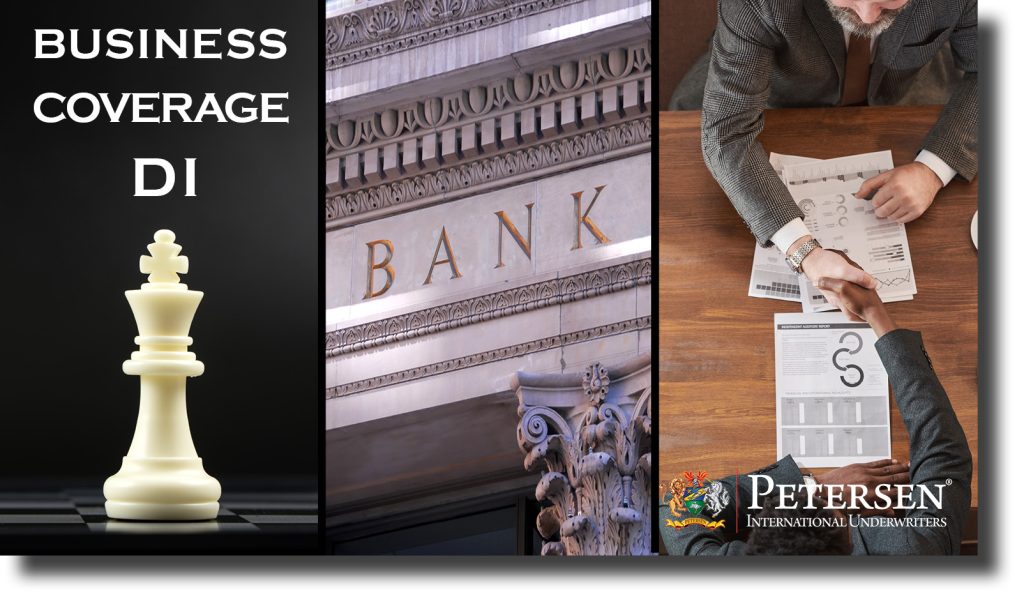There’s Lots More to DI Than Just Personal Coverage
One’s disablement causes a ripple effect. Not only is the disabled person directly affected and overwhelmed, but the resulting waves hit everyone and everything in the vicinity. Family and friends are reeling from the consequences, but so too are the disabled person’s coworkers and employers. And if the person happens to be a business owner, the negative results are compounded, affecting business partners and employees. The disablement of a business owner can be a financial catastrophe and an operations nightmare, but it doesn’t have to be.
Properly employing various disability business products into an astute business plan will help ensure business continuity and promote succession even in the unfortunate, seemingly helpless shadow of a business owner stricken by a disability.
Business overhead expense (BOE) disability insurance is one of the greatest safety nets available to the American business owner. The product aims to provide vital reimbursement for the monthly liabilities for which an owner is responsible in case of that owner’s disablement. If an insured person were to suffer a disability due to accident or illness, the insurance company pays monthly benefits after a short elimination period to cover the business’ incurred monthly expenditures until the insured person can return to work or until the benefit period expires. Benefits cover common overhead expenses including payroll, corporate insurance premiums, utility bills, mortgage payments, furniture rentals, loan interest payments and equipment leasing fees. BOE coverage keeps a company afloat so that the business stays open, employees remain on the payroll and income is maintained until the disabled owner can either return to work or effectively sell the business.
Loan indemnification insurance is also very important. Business owners regularly rely upon outside funds to manage and grow their companies, utilizing borrowed capital for purchases and leases on big-ticket items such as medical equipment, industrial fabrication machinery, books of business and real estate. Many business loans offered today require fully collateralized disability insurance, indemnifying the loan repayment schedule. Lenders regularly want additional safeguards for the return on their investments against the risk of unforeseen disablement of the loan guarantor.
An appropriate option for borrowers is the purchase of a loan-specific indemnification disability plan that protects independently from a client’s personal disability or BOE policy holdings. Specialty-market DI carriers have loan-specific disability plans which are designed to satisfy lender insurance requirements, protecting both the principal and interest payments and mitigating the potential financial burdens of a borrowing business owner. Loan DI policies allow for complete indemnification, leaving other important personal and business disability insurances intact.
Another important safeguard is key person disability insurance. The physical loss of a key employee or employer to incapacitation can understandably lead to the loss of business accounts, the loss of relationships with important contacts, not to mention the office workflow issues that inevitably arise during an extended absence. Corporate capital is typically allocated to finding replacement staff who then need to be trained and paid an appropriate salary. The costs of the loss of a key person due to disability can easily put a company into chaos, both operationally and fiscally. Businesses need insurance solutions to minimize corporate risk against the disablement of an owner or key employee. Key person DI policies provide total and partial disability benefits, allowing vital cash payments to be pumped back into the affected business. The monthly proceeds of a key person DI policy are purposed to force a corporate renaissance, helping to hire and train a replacement employee, promoting continuity of the firm or to economically steady the company for an eventual buy-out.
Succession planning is also vital in maintaining business continuity and balance when an owner decides to enter a life of retirement. But how do you avoid financial turmoil during a regime change and the sale of a thriving business? You employ a fully funded buy/sell agreement, outlining the procedural turnover of the business to one or more individuals. This is a natural and progressive step as long as life continues as expected. But we all know that isn’t always reality. Life can throw curveballs like the permanent disablement of the business owner, forcing a premature buy-out of the business.
In most instances of unforeseen disability, successors won’t have the capital necessary to fully-fund the purchase of the disabled owner’s shares. Chaos ensues and the business suffers or defaults. The solution is buy/sell disability insurance. A comprehensive buy/sell DI policy will properly fund a purchase agreement at the time of the permanent disability of an owner to sufficiently address the monetary needs of the buy/sell contract. Benefits usually begin after an elimination period of at least 365 days, funding the partnership agreement and allowing the other owners to essentially purchase the disabled owner’s financial stake in the corporation.
Whether it be buy/sell insurance, key person, overhead coverage or loan indemnification, disability protection is a primary requisite for any well managed corporate business plan.
